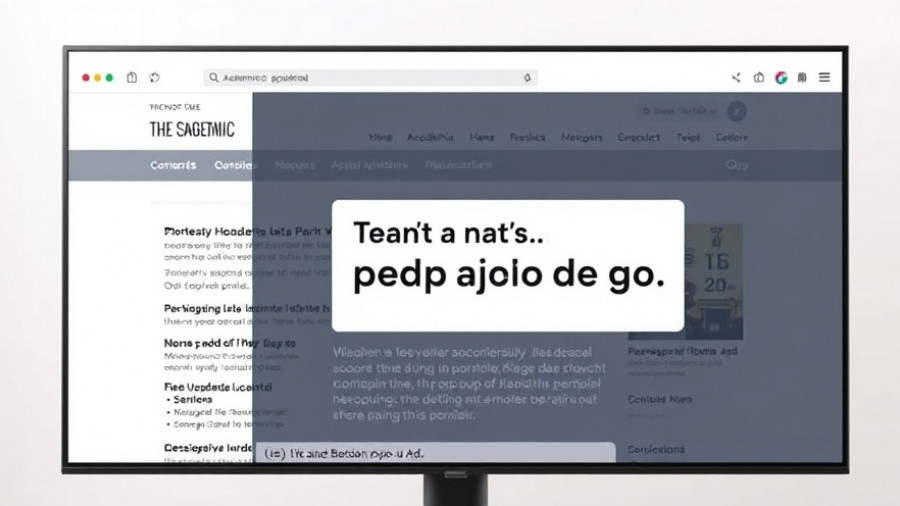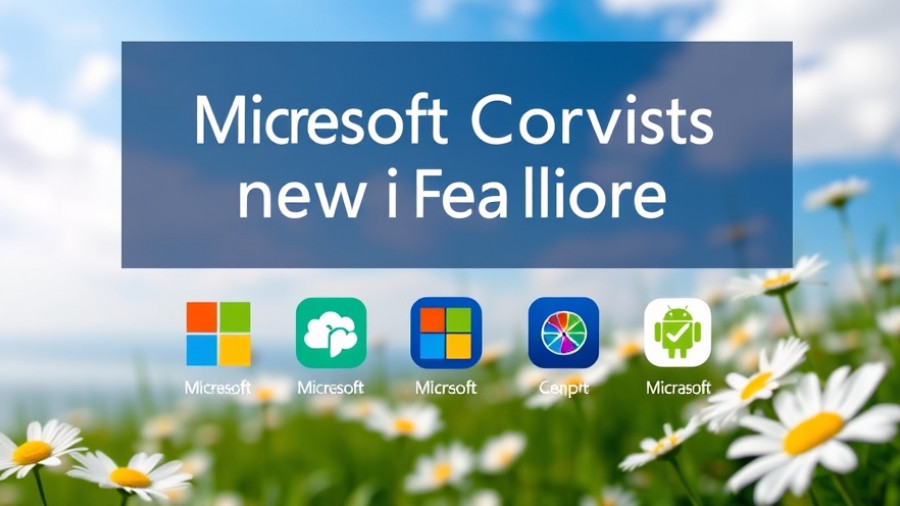
Microsoft Unveils Copilot: Transforming Excel with AI Integration
Microsoft has recently introduced a transformative feature in Excel called the Copilot function, which integrates advanced artificial intelligence directly within spreadsheet operations. This innovative tool enables users to input plain-language commands that generate various outputs, such as summaries, classifications, or organized tables, tailored to the specific data entered in their Excel sheets.
No More Complex Formulas: Simplifying Spreadsheet Functions with Copilot
Historically, building complex formulas in Excel can be a daunting task, requiring a steep learning curve for many users. With Copilot, users can simply type commands like ‘Classify this customer feedback,’ and the AI takes care of structuring the output automatically. This simplification not only makes Excel more accessible but encourages a greater use of data analytics among professionals.
The Technological Backbone: The Power of GPT-4.1-Mini
At the heart of this new functionality is OpenAI’s GPT-4.1-mini, a lightweight yet powerful generative AI model optimized for performance within Excel. Microsoft has ensured that this tool works seamlessly with traditional Excel formulas such as IF, SWITCH, LAMBDA, and WRAPROWS. This integration means that users can combine AI-driven outputs with existing formula logic, facilitating a dynamic working experience.
Maintaining Data Privacy: Confidence in AI Processing
In an era where data breaches and privacy concerns are prevalent, Microsoft has placed significant emphasis on the security of information processed through Copilot. The company assures users that the data will remain confidential and will not be utilized to train AI models. This assurance is essential for businesses and individuals who handle sensitive information and rely on Excel for critical tasks.
The Limitations to Consider: Balancing Innovation and Accuracy
While the Copilot function marks a significant advancement in spreadsheet technology, Microsoft has urged users to exercise caution. The company cautions against relying on AI for tasks that require a high degree of accuracy, such as financial reporting or compliance-related activities. Users should be aware of potential errors that may arise and should always double-check important outputs before finalizing any critical documents.
Exploring the Future: Opportunities and Challenges Ahead
This integration of AI within Excel represents a pivotal moment in how we approach data analysis and organization. As the functionality of tools like Copilot expands, the potential for enhancing workplace productivity grows. Yet, users must remain vigilant about the AI's constraints, such as the inability to pull live data from the internet and limitations on usage frequency. Addressing these challenges will be key to maximizing the tool's effectiveness.
Final Thoughts: Embrace the Future of Excel with Copilot AI
With the ongoing developments in Microsoft AI technologies, the Copilot function is set to redefine how users interact with Excel. As businesses and professionals increasingly lean on data-driven decisions, embracing tools like Copilot could lead to a substantial competitive edge. Amplifying productivity and simplifying complex tasks, Microsoft is positioning itself as a leader in the technological future of workplace applications.
By staying informed about advancements like the Copilot function, readers can make strategic decisions in adopting these tools, ultimately enhancing their efficiency and effectiveness in data management.
 Add Row
Add Row  Add
Add 




Write A Comment